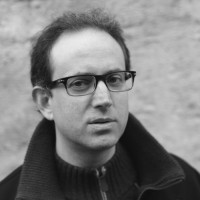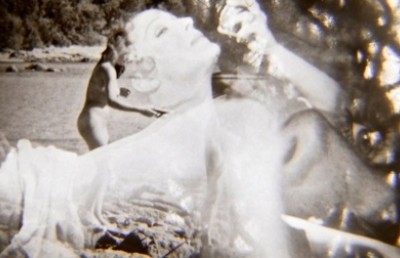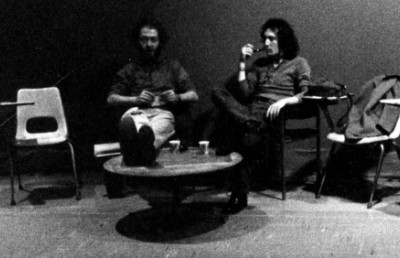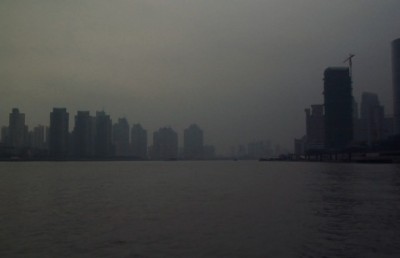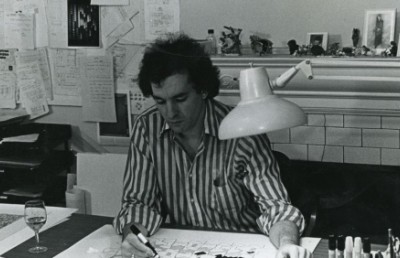Philippe Gandrieux: Reflections Unheard
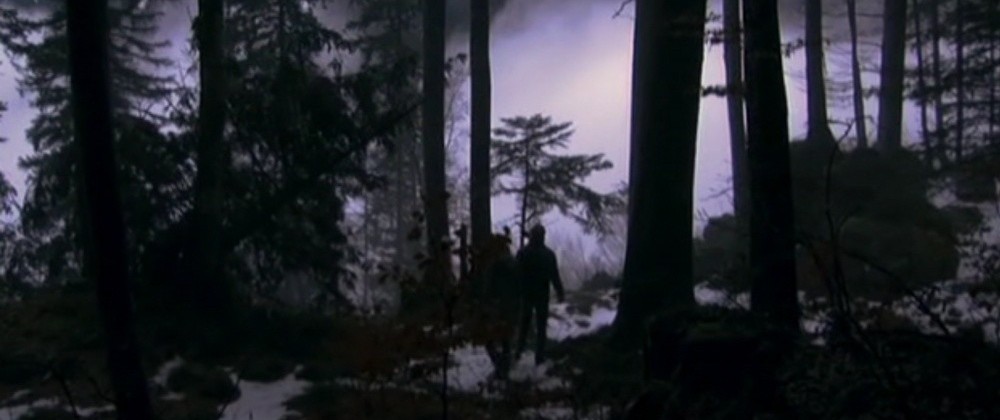
First Impressions
Vancouver International Film Festival, 1998. I can’t remember what drew me to the screening of Sombre; likely the festival catalogue’s blurb touting controversy of some kind. But it was only seconds into the film when it was clear that Grandrieux was a voice of the highest order in contemporary cinema, and that my horizons would be forever expanded thanks to his work. I watched and listened as eerie shots of a solitary car on a winding road in the French countryside cut abruptly to astonishing footage of children screaming in response to a puppet show, followed by soft focus images of blindfolded boy almost floating across the landscape ahead of an ill-defined monolith. A sense of profound connection with the aesthetic emerged as though it was something I knew I had always wanted to see and hear but without the ability to articulate just exactly what it would be. Like something from a dream. My dream. But not mine. Then he showed me things I never thought I would encounter in the cinema. And in the act of audition, these became mine too.
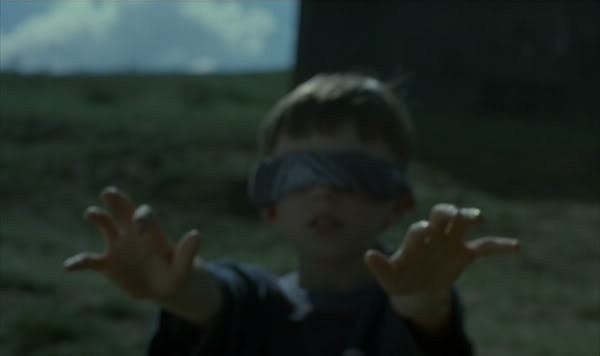
Sombre
Unhearing
For me, the fiction filmmaking of Philippe Grandrieux is a cinema of unheard screams. I think here of that famous philosophical query: “If a tree falls in a forest, does it make a sound?” Or to rephrase in the words of Bruce Cockburn, “does anybody hear?” When Claire dips her head below the surface of a lake in Sombre, she misses the urgent call of her sister echoing through the valley as the latter is accosted by serial killer Jean some distance away. It is a moment of intense tranquility charged with our knowledge of a situation to which Claire remains ignorant, a tension borne of the distances between characters caught in a web of attraction.
As Mélania delivers her cabaret performance in La Vie Nouvelle, her guitarist yawns his jaw wide as he closes his eyes and turns his head upwards, a visage that seems to scream in agony but from which we hear nothing but the sparse picking of his guitar. These sounds are reminiscent of those we hear when young Seymour first lays eyes on the call girl who dances for him, the loud bustle of the crowded nightclub falling away as a private space is carved out for the two of them, if only for a moment. The guitarist’s silent scream foreshadows the harrowing cries that Seymour lets out at the close of the film, vocalizations that Mélania will never hear for Seymour has been unable to claim her as his own.
Nor does Alexi hear the calls of his sister Hege and new lover Jurgen one night in Un Lac when he disappears from the house, distraught over the possibility of losing the person closest to him. Their voices reverberate through the woods that provide the family’s living while Alexi’s body reverberates with the vibrations of an epileptic seizure in a bank of snow. Eventually he is found, but his sister leaves him in the end, her own voice to be left unheard by Alexi’s ears from then on, a silence that will no doubt haunt the sonorous environment in which he lives. These unheard cries into voids no longer populated by ears that were once there to listen speaks volumes about the nature of Grandrieux’s work, so profoundly committed to giving voice to his uncompromising sense of what the cinema should be that he remains relatively unheard by so many of the world’s cinephiles.
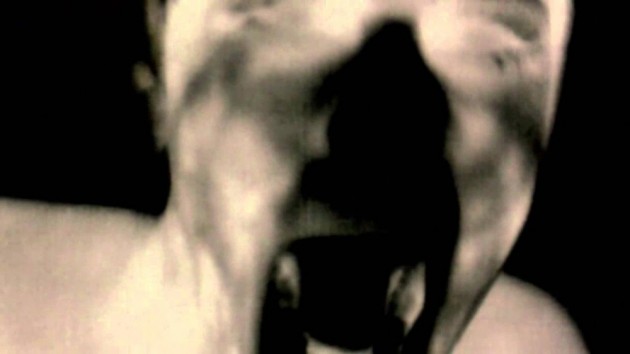
La Vie Nouvelle
Energy Transfer
What engages me most about Grandrieux’s audiovisual style is how it enacts transferences of energy between subject, camera and the audience, and how sound reaches through these transferences to open them up to new worlds. In Sombre, Claire and Jean drive to a party. The camera frames Claire in the front seat as she begins to gesture with her hands as though in response to music that emerges from a source outside of the diegesis. The camera becomes increasingly agitated as the music grows in intensity, then cutting directly to Claire dancing at an outdoor gathering. As her movements get increasingly frenetic, the camera stabilizes and begins framing her in wider shots, revealing the context of her surroundings. And finally, the score track fades into source music presented as coming from the PA system at the party, Claire’s intensity giving way to a smile and a moment of seeming amusement as she dances.
This shifting of vibrancy from camera to subject in conjunction with shifting registers of sound forms a template that can be traced in Grandrieux’s other films as well. In La Vie Nouvelle, Mélania dances as though a marionette tied to strings manipulated by her pimp Boylan. As she spins around in circles at the command of his gesturing hands, the camera takes on her movements and slips into an agitated state rendering the couple increasingly abstract until we see only abstract patterns of light morphing like pools of mercury rolling across a pitch-black plate. The sound corroborates with unidentifiable swishing noises that seem almost cartoonish in their emulation of her motion. But as in Sombre, we then cut from these abstract close-ups to wider shots that reveal a spatial transition from private quarters to a crowded nightclub, and here the camera stabilizes considerably as Mélania’s dancing becomes ever more frenetic. And here the swishing sounds reveal themselves to be ornamental elements of a techno track that thunders in as we move into the nightclub.
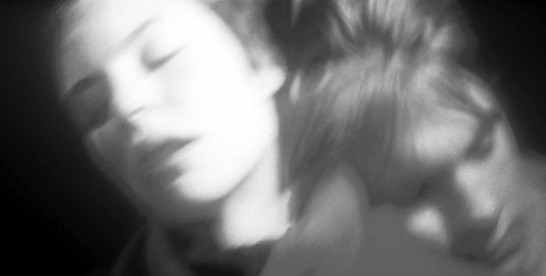
La Vie Nouvelle
And in Un Lac, the film’s intense opening begins with the camera enacting the vigorous movements of Alexi’s wood chopping. Tight framing on axe-blows creates an agitated synergy between subject and camera which is then taken over by the cinematography alone as Alexi slips into an epileptic seizure, the camera living his spastic convulsions through point-of-view shots of the surrounding landscape abstracted through the intensity of the movement, only to switch to a stillness of framing when cutting to a shot of Alexi lying in the snow, his body twitching violently. Although the shifts in auditory register are subtler here than in the previous two examples, a quietude emerges once the camera becomes still that contrasts sharply with the echoing axe blows that form the rhythm of the film’s opening moments. Grandrieux’s audiovisual strategies here are designed to carry transference of energy from his own corporeal engagement with his filmed subjects through to the audience, and this strategy has been a success.
Image, Sound, Process
In reading interviews with Grandrieux I’ve been most struck by his claims that he does not view his own rushes. Always operating his own camera, he turns his footage over to his editor to assemble a rough cut before he’ll see anything he has shot. He has argued that the act of lensing the films personally burns his compositions into his mind, a function of having lived a relationship between himself and his actors by way of the camera. And so he feels no need to review the images in order to know what is there; he knows it by way of the act of shooting. This is, of course, a mark of supreme confidence in his own ability to predict what the result of his cinematographic selections will be. But also remarkable in his ability to trust others with what is essentially an extension of his own corporeal being. The transference of energy he seeks to enact between he and his actors through the cinematographic process extends to how he lives in the hands of his editor. I am especially intrigued by how effectively he has translated the effects of this process into sound by way of very different means, a heavy emphasis on studio fabrication that began in Sombre but solidified into 100% post-production sound design on Un Lac. There is something in his process that speaks to dramatic differences between necessary handling of sound and image to make them work as wonderfully together as he does.
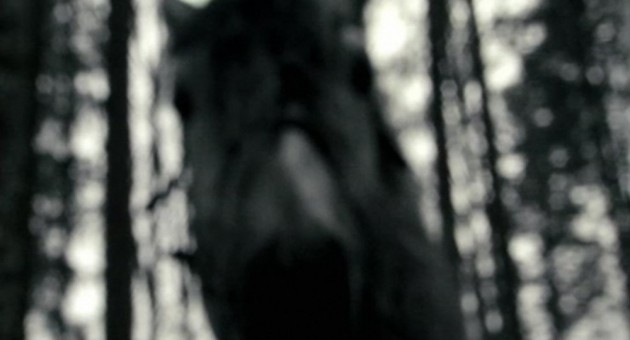
Un Lac
Lasting Impressions
While it’s impossible to pick a favourite film or sequence, I can say with certainty that my first time through the opening scene of Un Lac was the most charged cinematic experience I have endured out of any of his films. But more than just the intensity of the sound and cinematography were affecting me here; it was the set-up provided by the previous two films that had me so keyed up. I cannot overstate the level of anticipation I had for this film after Sombre and La Vie Nouvelle had rocked me so hard. Yet I will admit to having some difficulty with the level of corporeal violence enacted between the characters in these first two outings, and after La Vie Nouvelle I began to wonder if his style was necessarily connected to his penchant for disturbing content. So my big question for the new film was this: could Grandrieux maintain his visceral intensity without having characters come into physical conflict with one another?
So it was that I came to my first viewing of Un Lac with a bit of anxiety. As the axe blows started to fall hard with a familiar cinematographic agitation it seemed certain that Grandrieux was leading us down a path very similar to the ones we had already walked with him. As the film unfolded, however, the violence of the opening moments was recast in a decidedly different light as the film began to operate as an intimate case study of the physicality of human tenderness, emphasized through intimate interiors of the family’s tiny house shot so that only the candlelit faces of its denizens are visible in the murk. In this veritable absence of interior mise-en-scène, Grandrieux concentrates on his characters as they move slowly around their domicile in shallow focus. He emphasizes details of an eye, a hand, a pair of lips, as characters converse, hold and caress each other in the dark. And the sound design for these scenes is absolutely incredible in its attention to the minutiae of the environment: the stranger’s breath as he sleeps under Alexei’s suspicious gaze; the creaking of the floorboards under inaudible footfalls; and whispers of longing that keep the exterior’s howling wind at bay. In these moments, the film’s first sequence opens out into the expanses of the human heart rather than being locked to the oppressive quality that comes when you know that violence can and will erupt at any moment. It doesn’t erupt here. As Grandrieux explained during the Q+A of the film’s screening at FNC 2008: the violence between people has shifted to the violence of the harsh landscape to which the people that live within it must respond with a sheltering spirit. So my anxiety lifted, now assured that Grandrieux’s magic could be cast by other means. Sadly, the flip side of this assurance is that the tension that so charged my first experience of the opening to Un Lac can never return with subsequent screenings.
Experiment
One of the things I find so fascinating about Grandrieux’s fiction films is how they navigate so deftly between modes of cinematic address. If there’s any “experiment” in Grandrieux’s work, it must concern the limits to which he can push narrative coherence while still making films that are clearly interested in following people along paths of action and consequence. While many critics describe the likeness of some of his shooting and montage styles to Stan Brakhage and other notables of the avant-garde, he is just as easily discussed in terms of the contemporary French “cinema du corps” and, I argue, a range of realist traditions that ground his forays into physicality and perception within the world of the quotidian. His overlapping aesthetics make me understand that that which seems most extraordinary in his work, perhaps his forays into abstraction or commitment to philosophical ambiguity, is something dear to us all if unlocked in just the right way. But if we need to situate Grandrieux on a map of the experimental arts, it would have to be a map in the hands of a Situationist psychogeographer being used to navigate spaces other than that for which the map was originally designed. Such is the effect of a Grandrieux film, yielding a profound sense of orientation tied to the chance of unguided passage.
Humanity
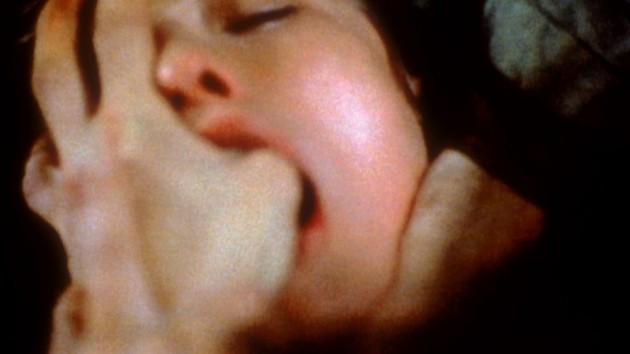
Sombre
For me, this is a profoundly human cinema. Grandrieux continually grounds his often unsettling content in an audiovisual language designed to open audiences into the realm of empathy. Unlike his contemporary Gaspar Noé, a nasty piece of work who only seems interested in using his exceptional talents to bludgeon his audience to death for his own sadistic pleasures, Grandrieux’s forays into underrepresented areas of perception open doors to emotional engagement with the worlds he creates. It is fascinating to me how much access he allows the audience to his worlds while maintaining such an oblique manner of presentation, so often laden with extremely difficult material. Grandrieux’s work is profoundly a cinema of the body, but it imagines the body as inextricably linked to the mind. His cinema is a journey through muscle memory and cerebral flex, an attempt to create films that enact what Rupert Sheldrake calls the “morphogenetic field,” the tendrils of the mind casting a wide entanglement beyond the confines of the skull wherein we are all connected to each other through thought in a tangibly physical way.
Reassurance(?)
Simply put, the fiction films of Philippe Grandrieux have reassured me that we are indeed living in an important time for the cinema, a time in which, contrary to more cynical accounts of the contemporary film world, exploration continues to reveal new possibilities in a medium threatened with becoming subsumed by media convergence. Grandrieux’s work, more than any being produced today, demands the rigor of the black box cinema experience, a cry out into the darkness that, sadly, may ultimately go unheard.
This essay first appeared in a French translation in Hors Champ on October 9, 2012. Some of the analysis has been reworked for my forthcoming essay on Grandrieux in The Oxford Handbook to Music, Sound, and Image in the Fine Arts, edited by Yael Kaduri.

